Watercolour Paints
Uncover our range of Watercolour Paints at Discount Art & Craft Warehouse.
We believe that art should be accessible and available to everyone within every budget. Whether you are a professional or a beginner, we aim to provide you with exactly what you need! We stock a wide range of Watercolour Paints from the biggest art brands around including Derwent, Reeves, Winsor & Newton, Faber-Castell, Art Spectrum, Copic, Matisse and many more.
Delivery is Australia-wide so you can shop in the comfort of your own home.
Winsor & Newton Professional Watercolour Paints 5ml
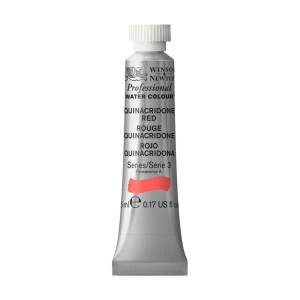
Watercolour Paints
FROM $18.55
Jasart Byron Watercolour Paint Set
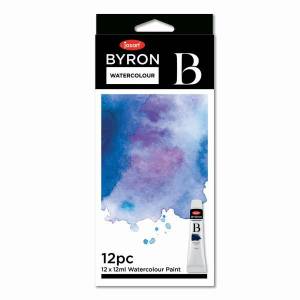
Watercolour Paints
NOW $16.50
Winsor & Newton Professional Watercolour Paint Sticks
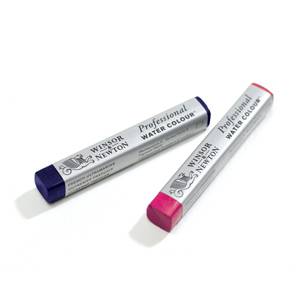
Watercolour Paints
FROM $12.75
Winsor & Newton Professional Watercolour Half Pans
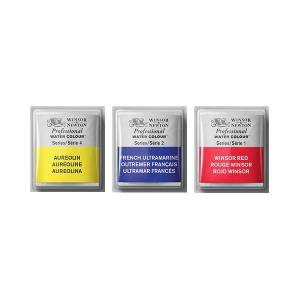
Watercolour Paints
FROM $18.50
Winsor & Newton Professional Watercolour Paints 14ml
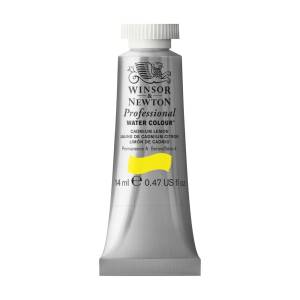
Watercolour Paints
FROM $32.95
Winsor & Newton Professional Watercolour Field Box

Watercolour Paints
NOW $310.65
Winsor & Newton Professional Watercolour Paints 37ml
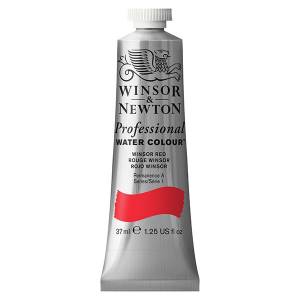
Watercolour Paints
FROM $73.90
Reeves Watercolour Paint Pans Tin & Brush
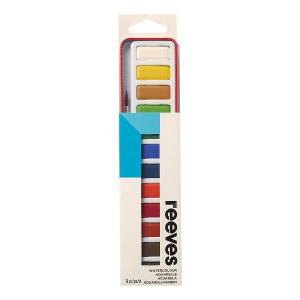
Watercolour Paints
NOW $17.50
Jasart Byron Watercolour 12ml Paint Set 24
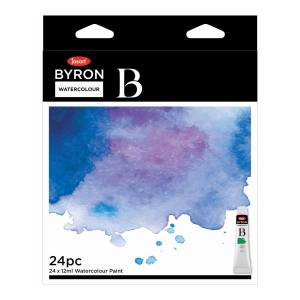
Watercolour Paints
NOW $25.05
Derwent Line & Wash Mixed Media Set 14
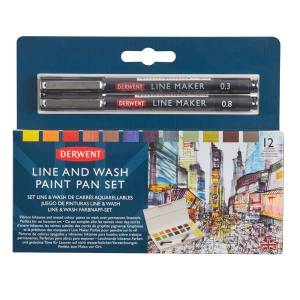
Watercolour Paints
NOW $59.30
Winsor & Newton Professional Watercolour Half Pan Compact Set
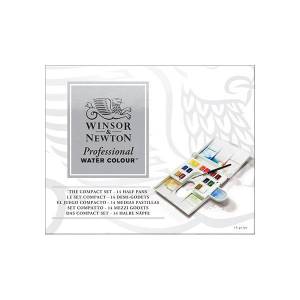
Watercolour Paints
NOW $260.00
Winsor & Newton Cotman Watercolour Half Pan And Brush Pen Set
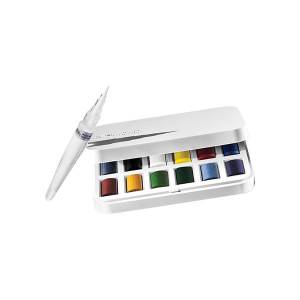
Watercolour Paints
NOW $88.00
FAQs about Watercolour Paints
How Do You Use Watercolour Paint?
There are various ways to use watercolour paints, but a classic way of using watercolours is to use the wet-on-wet method. Here's a simple way to get used to this painting technique.
1) Begin with a wet brush and paint two rectangles
2) See the damp makes you have painted with water
3) Add some watercolour from your palette and add it onto the first wet rectangle you just made
4) With the other rectangle, add in a few dabs of watercolour paint. This is good way to learn how to gauge the amount of water you like to use and the amount of paint.
5) Once the paint begins to dry, it should look quite different as the water colour will dry in unpredictable ways since you don't have as much of control due to the fluid nature of this painting technique.
6) Furthermore, once it has completely dried, it will have changed even more. The watercolours may not appear as strong, but great textures will begin to appear.
Now you can see how you may like to use this watercolour painting method in your projects.
Does Watercolour Stick To Acrylic Paint?
Acrylic paint sticks to watercolor paint if the watercolor is used first and the acrylic paint is applied in wet form or used as glazing. However, if acrylic paint is used first, it generally doesn't work favourably.
How Is Watercolour Paint Made?
The two main component that make watercolour paint are the pigment and the binder.
The pigment will provide the paint its colour and the binder will allow the paint to stick to the surface (watercolour paper) once it dries. The pigment is of soluble nature which allows the paint to become translucent when dissolved, however the binder is non-soluble, which allows it to keep its binding properties even when mixed with water.
Gum-arabic is the binder agent predominantely used in watercolour elaboration, however some brands use synthetic binders. Pigments on the other hand can come from a range of sources and are classified as either synthetic or natural or a mix of both.
Most watercolour paints also contain additives designed to extend the shelf life of the product as well as to enhance the paint performance.
What Do You Paint Watercolour On?
The surface used for watercolour paint has a huge impact on the end result of your artwork. Because of the water used for watercolour paint, the surface needs to be absorbent and allow for multiple applications without tearing or buckling.
Watercolour paper meets all those requirements, however, there are thousands of options in the market. They are categorized according to their weight, texture and manufacturing process.
Paperweight is measured in pounds (lbs) or grams per square metre (gsm). Lightweight paper is usually cheaper and ideal for beginners, however, will require stretching, meanwhile, the heavyweight paper will be more resistant and is less likely to require stretching.
Three main texture categories of watercolour paper stand out: Hot pressed, cold pressed and rough, which range from smoother to rougher texture depending on the artists needs. As for materials used for the paper, you can choose between wood pulp based or cotton based.
About watercolour paints
Watercolour paints are a type of paint made with finely ground pigments suspended in water. They are one of the oldest types of paints, dating back to the ancient Egyptians. Watercolours have a long history of use in art, and their popularity has only grown in recent years.
Watercolour paints are beloved by artists for their vibrant colours and ability to create delicate effects. They can be used to paint everything from landscapes to portraits. Watercolour paints are also very versatile and can be used in a variety of different ways. For example, they can be applied wet-on-wet for a soft look, or dry-on-wet for a more intense effect.
There are endless possibilities when it comes to painting with watercolours. So whatever your level of experience, give them a try! You might just fall in love with this beautiful medium.
How many types of watercolours are there?
There are two main types of watercolours: tube watercolours and pan watercolours. Tube watercolours are the type that most artists are familiar with. They come in small tubes, and can be mixed with water to create a variety of different effects. Pan watercolours, on the other hand, come in small, solid pans. They're generally a bit more expensive than tube watercolours, but they're also more convenient to use and easier to transport.
No matter which type of watercolour you choose, you're sure to create beautiful paintings that you'll treasure for years to come. So get out there and start exploring the world of watercolours!
Which Watercolour paints are best?
There are so many different types and brands of watercolour paints on the market, it can be hard to know which ones to choose. But don't worry, we're here to help.
For beginners, we recommend choosing a watercolour paint set that comes with a variety of colours. This way, you can experiment and find the shades that you like best. A good set will also include a brush, so you have everything you need to get started.
If you're looking for high-quality watercolour paints, then look no further than Winsor & Newton. This British company has been making some of the best art supplies for over 150 years. Their watercolour paints are loved by artists all over the world for their exceptional pigments and smooth texture.
Another great option is Sennelier's Watercolour Paints. These French-made paints are made with pure, light-fast pigments and have a thick, creamy consistency. They're perfect for creating luminous effects and beautiful washes of colour.
No matter which watercolour paints you choose, make sure to experiment and have fun! Painting is all about exploring and discovering what you like best. So go forth and create something beautiful!
What makes watercolours different from other types of painting materials?
Watercolours are unique in that they are made with finely ground pigments suspended in water. This gives them a vibrant colour and delicate texture that is unlike any other type of paint. Watercolours are also very versatile and can be used in a variety of different ways. For example, they can be applied wet-on-wet for a soft look, or dry-on-wet for a more intense effect.
So if you're looking for a truly unique painting experience, then watercolours are the way to go!
What is the difference between watercolour painting and oil painting?
Watercolour painting generally refers to the art of painting with water-soluble pigments on paper. This type of painting has a long history, and its origins can be traced back to ancient China. Watercolour painting is often associated with a light and delicate aesthetic, as the colours tend to be more muted and subtle than those used in oil painting.
Oil painting, on the other hand, is a type of painting that uses oil-based pigments. These pigments are usually mixed with a drying oil, such as linseed oil, to create a paint that can be applied to a variety of surfaces. The oil painting has a richer, more vibrant colour palette than watercolour painting, and the paint can be layered to create a variety of effects. Oil painting is also more durable than watercolour painting, as the pigments are less likely to fade over time.
What is the difference between watercolour painting and acrylic painting?
Watercolour painting is typically done with water-soluble paints, while acrylic painting uses synthetic polymer-based paints. Because of this, watercolour paintings have a softer and more delicate appearance, while acrylics tend to be more vibrant and have heavier bodies. Additionally, watercolour paintings are usually transparent, while acrylics can be either transparent or opaque.
